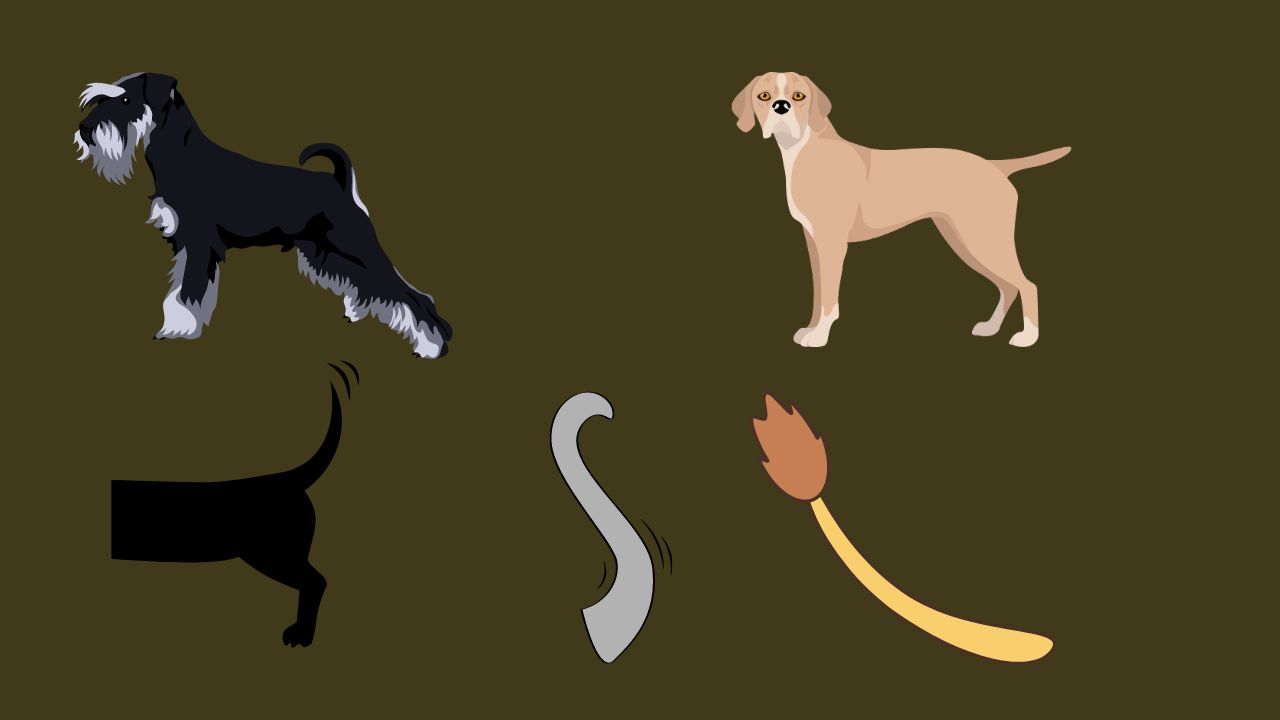Do Poodles have tails? Absolutely! The Basics of Poodle Anatomy includes the elegant tails that are a signature feature of Poodles, regardless of their size (Standard, Miniature, or Toy). These graceful and functional tails play a crucial role in a Poodle’s balance and communication. While tail docking has historical roots in preventing injuries for working breeds, it has evolved into a mainly aesthetic practice today. Understanding the types of Poodle tails and the controversy surrounding tail docking can help owners make informed decisions about their pets’ well-being.
Historical Context of Tail Docking
Tail docking, the procedure of cutting part of a dog’s tail, has historical roots in working breeds, where it was believed to prevent injuries or infections. In modern times, however, this practice is mainly aesthetic and less about function.
Types of Poodle Tails

Docked Tails
Purpose and Aesthetic Considerations
Docking a Poodle’s tail is often done for aesthetic reasons, adhering to breed standards that call for a shorter tail. Historically, this was also thought to prevent injuries, although this is no longer a prevalent concern.
The Docking Procedure
Tail docking is performed on young puppies, usually within the first few days of life. The procedure involves removing a portion of the tail, often under anesthesia, to achieve the desired appearance.
Natural Tails
Appearance of Natural Tails
Poodles with natural tails have long, full tails that often curl slightly or hang straight, depending on the individual dog. These tails are expressive and can be used for balance and communication.
Benefits of Keeping the Tail Natural
Keeping a Poodle’s tail natural can offer several benefits, including improved balance and communication through tail movements. It also avoids the potential pain and risks associated with docking.
The Controversy about Do Poodles Have Tails?

Veterinary and Ethical Perspectives
Many veterinarians and animal welfare organizations oppose tail docking, arguing that it is an unnecessary cosmetic procedure that can cause pain and long-term discomfort. For example, the American Veterinary Medical Association opposes tail docking for purely aesthetic reasons.
Arguments Against Tail Docking
Critics of tail docking emphasize that it removes a significant part of the dog’s body that contributes to its physical and emotional well-being. Additionally, it can lead to complications and discomfort for the dog.
Legal Status and Regulations
Tail docking regulations vary by country. In many places, docking is banned or restricted unless for medical reasons. Pet owners should be aware of local laws regarding this procedure.
How to Identify Tail Types in Poodles

Recognizing Docked Tails
Docked tails are shorter and may appear straight or with a small nub. The absence of a long tail is often the most noticeable feature.
Identifying Natural Tails
Natural tails are more extended and complete and may exhibit natural curling or movement. They are generally more flexible and expressive compared to docked tails.
Implications for Poodle Owners
Grooming and Care for Different Tail Types
Natural tails require regular grooming to avoid tangles and mats, especially in longer-haired Poodles. Docked tails generally require less grooming but still need regular checks for health.
Choosing a Poodle with a Natural or Docked Tail
Deciding between a Poodle with a docked or natural tail often comes down to personal preference and ethical considerations. Understanding the implications of each choice can help owners make an informed decision.
Conclusion
Poodles do have tails, which can be docked or natural. Tail docking is a traditional practice often rooted in aesthetics, but many advocate keeping tails natural for the dog’s well-being. Understanding the differences and implications can guide Poodle owners in making choices that best suit their pets.
Why do breeders cut off part of the poodles’ tail? Besides the look, is it really necessary?
Read another truth! Do poodles have webbed feet?
FAQs
Why do some Poodles have docked tails?
Docked tails are often a result of breed standards and aesthetic preferences. Historically, docking was thought to prevent injuries, but now it is mainly for appearance.
Is tail docking painful for Poodles?
Tail docking can be painful, especially for young puppies, and carries risks of complications. Many animal welfare organizations now oppose the practice.
Can I tell if a Poodle’s tail is docked or natural by its appearance?
Yes, docked tails are shorter and may appear as stubs, while natural tails are longer and fuller with natural movement.
Are there any health benefits to tail docking?
Tail docking has no significant health benefits, and many experts argue it is an unnecessary procedure with potential pain and complications.
What are the legal restrictions on tail docking in different countries?
Laws vary by country. In some places, tail docking is banned or restricted to unavoidable circumstances, such as medical reasons. Owners should check local regulations.
